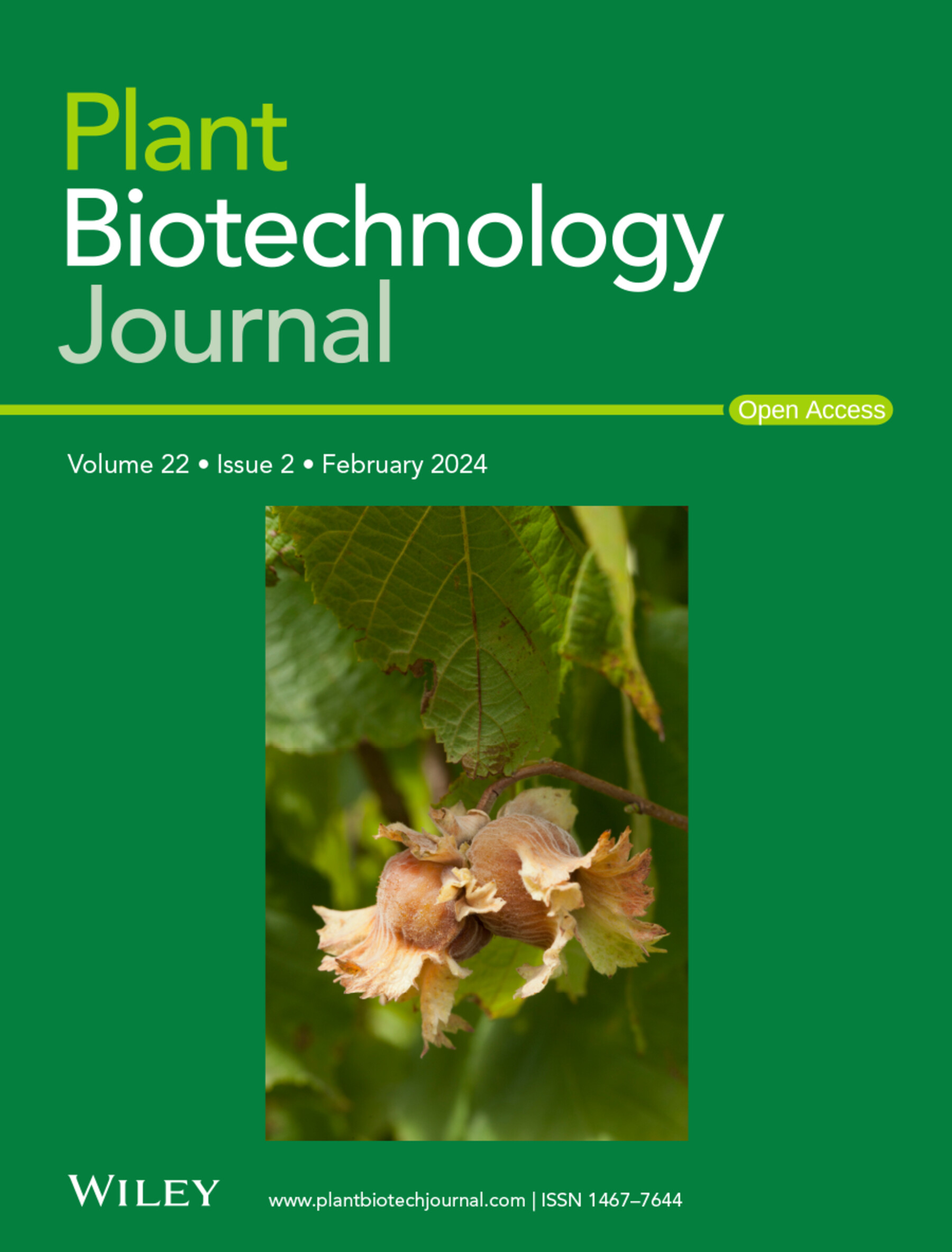表达P19沉默抑制因子和冠状病毒样颗粒的本菌烟混染叶片的分子变化
IF 10.1
1区 生物学
Q1 BIOTECHNOLOGY & APPLIED MICROBIOLOGY
引用次数: 0
摘要
利用严重急性呼吸综合征冠状病毒2型穗(S)蛋白在经农侵的本烟叶中短暂表达,可实现2019冠状病毒病疫苗的生产。依托于肿瘤农杆菌载体,该过程通过病毒沉默抑制因子P19的共表达而得到促进。表达后,S蛋白进入细胞分泌途径,然后被转运到质膜,在质膜上形成冠状病毒样颗粒(CoVLPs)。我们以前通过类似的过程描述了流感病毒血凝素形成VLPs的影响。然而,仅在表达6天后采集叶片样本,尚不清楚流感VLPs (HA-VLPs)和CoVLPs是否会引起类似的反应。本研究采用时间过程采样方法分析了仅表达P19或P19和S蛋白的benthamiana叶片细胞的反应。后者触发了参与免疫的未折叠蛋白反应和转录因子基因的早期但短暂的激活。因此,防御基因以不同的表达动力学被诱导,包括促进木质素化、萜烯生物合成和氧化应激的基因。胁迫激素通路之间也发生了串扰,包括农业渗透后茉莉酸生物合成基因的抑制,以及S蛋白积累对水杨酸反应的抑制。总的来说,HA-VLP-和covlp -诱导的反应广泛重叠,表明纳米颗粒的产生对植物免疫的影响最大,无论病毒表面表达的蛋白如何。利用RNAseq的推断,我们最终发现Kunitz胰蛋白酶抑制剂的共表达可以减少covlp诱导的防御和叶片症状,而对植物生产力没有不利影响。本文章由计算机程序翻译,如有差异,请以英文原文为准。
Molecular changes in agroinfiltrated leaves of Nicotiana benthamiana expressing suppressor of silencing P19 and coronavirus-like particles
The production of coronavirus disease 2019 vaccines can be achieved by transient expression of the spike (S) protein of severe acute respiratory syndrome coronavirus 2 in agroinfiltrated leaves of Nicotiana benthamiana. Relying on bacterial vector Agrobacterium tumefaciens, this process is favoured by co-expression of viral silencing suppressor P19. Upon expression, the S protein enters the cell secretory pathway, before being trafficked to the plasma membrane where formation of coronavirus-like particles (CoVLPs) occurs. We previously characterized the effects of influenza virus hemagglutinin forming VLPs through similar processes. However, leaf samples were only collected after 6 days of expression, and it is unknown whether influenza VLPs (HA-VLPs) and CoVLPs induce similar responses. Here, time course sampling was used to profile responses of N. benthamiana leaf cells expressing P19 only, or P19 and the S protein. The latter triggered early but transient activation of the unfolded protein response and waves of transcription factor genes involved in immunity. Accordingly, defence genes were induced with different expression kinetics, including those promoting lignification, terpene biosynthesis, and oxidative stress. Cross-talk between stress hormone pathways also occurred, including repression of jasmonic acid biosynthesis genes after agroinfiltration, and dampening of salicylic acid responses upon S protein accumulation. Overall, HA-VLP- and CoVLP-induced responses broadly overlapped, suggesting nanoparticle production to have the most effects on plant immunity, regardless of the virus surface proteins expressed. Taking advantage of RNAseq inferences, we finally show the co-expression of Kunitz trypsin inhibitors to reduce CoVLP-induced defence and leaf symptoms, with no adverse effect on plant productivity.
求助全文
通过发布文献求助,成功后即可免费获取论文全文。
去求助
来源期刊

Plant Biotechnology Journal
生物-生物工程与应用微生物
CiteScore
20.50
自引率
2.90%
发文量
201
审稿时长
1 months
期刊介绍:
Plant Biotechnology Journal aspires to publish original research and insightful reviews of high impact, authored by prominent researchers in applied plant science. The journal places a special emphasis on molecular plant sciences and their practical applications through plant biotechnology. Our goal is to establish a platform for showcasing significant advances in the field, encompassing curiosity-driven studies with potential applications, strategic research in plant biotechnology, scientific analysis of crucial issues for the beneficial utilization of plant sciences, and assessments of the performance of plant biotechnology products in practical applications.
 求助内容:
求助内容: 应助结果提醒方式:
应助结果提醒方式:


